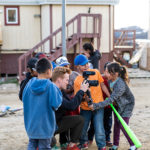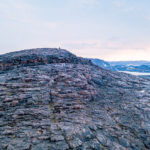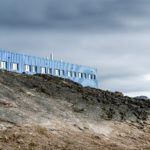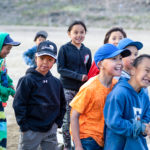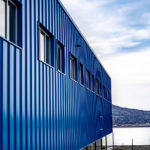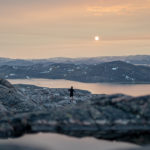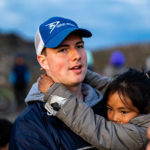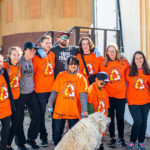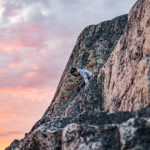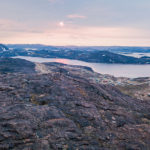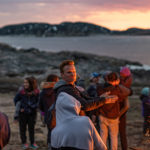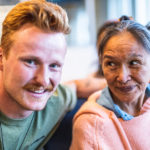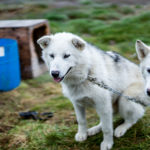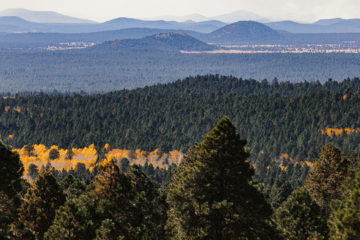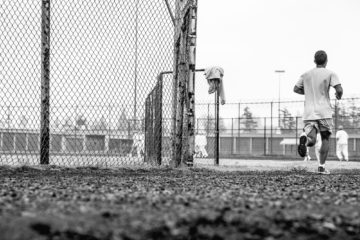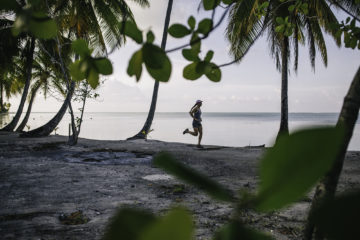Photos and words by Gavin Hatheway
The Journey from Halifax, Nova Scotia, to Cape Dorset is a long one. It starts with a flight to Ottawa where we meet with the team for dinner. My friend Dave Culligan and I are travelling to Cape Dorset, Nunavut with the Eatfit Project. We’re here to document an awesome group of students and professionals who make trips to Northern Canada to promote healthy eating and exercise to improve mental and physical health. This is done with a focus on respecting the cultural traditions of the local population.
I’m looking forward to getting my camera out to film what surely will be a very unique experience for myself, the travelling students, and the people of Cape Dorset. From my understanding, it isn’t too often the people of this town have a group from “The South” visit them. Let alone have them move in for a couple of weeks with a film crew.
The mission for Dave and me as videographers is to capture and produce daily videos during the trip. But most importantly, to tell the story of the relationships and lessons the locals and Eatfit team members share over the week. A story that we hope has the opportunity to be shared with a larger audience for years to come.
The first official morning as a team kicks off with a flight from Ottawa to Iqaluit, where we’re fortunate enough to have a little over an hour between flights. The lack of airport security means I’m safe showing up 15 minutes before the flight departs for Cape Dorset. 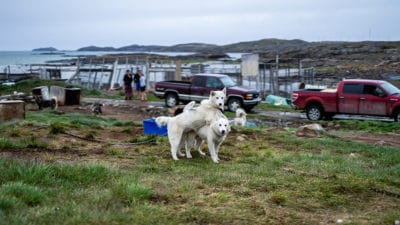 I take this opportunity to call up my old University friend Isaac for a quick tour of the city. He shows me his girlfriend’s dog sled team which greets us with an ear-piercing howl. We watch the dogs feast on their strict diet of raw fish caught from the waters just down the hill from their home. The visit with Isaac is short, but an incredible foray into the week to come. It’s not too long after saying goodbye to the dogs that we’re airborne in a small 24 seat plane flying over The Hudson Strait heading towards Baffin Island.
I take this opportunity to call up my old University friend Isaac for a quick tour of the city. He shows me his girlfriend’s dog sled team which greets us with an ear-piercing howl. We watch the dogs feast on their strict diet of raw fish caught from the waters just down the hill from their home. The visit with Isaac is short, but an incredible foray into the week to come. It’s not too long after saying goodbye to the dogs that we’re airborne in a small 24 seat plane flying over The Hudson Strait heading towards Baffin Island.
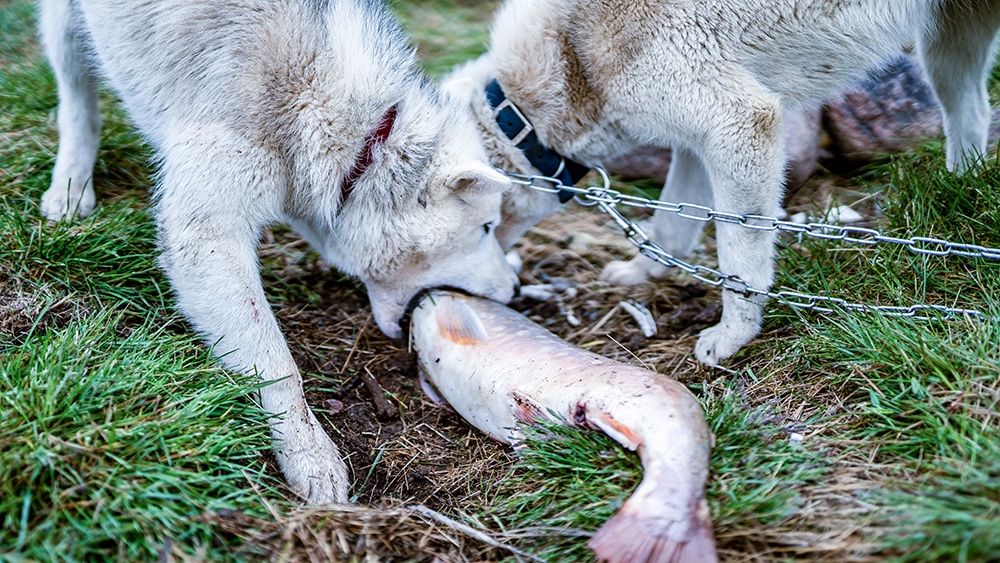
It becomes evident pretty quickly that it won’t require many miles to cover the entirety of this hamlet of 1400 people. Flying over Dorset Island and landing on the dirt runway reveals the town below, with snow speckled tundra in the distance. We go straight from the dirt landing strip into the back of a pickup truck-bed for our short drive up to the elementary school where we will be staying. There is only one hotel in Cape Dorset which isn’t big enough to accompany our team. 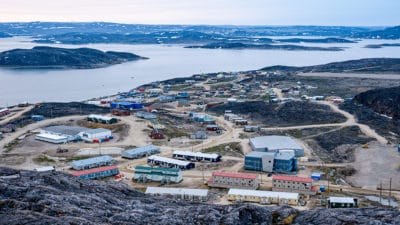 This means a long couple of nights ahead sleeping on a classroom floor. Once settled in, we take a walk down the road to the co-op to get some supplies for the first few meals of the week and are quickly graced with the beauty and hardships this town has to offer. We walk down the hill saying hi to some kids riding their bikes overlooking the bay. A nice scene until I see one of the kids, no older than 12 years old, smoking a cigarette while coasting down the hill beside us — apparently not an uncommon sight. We enter the co-op and are greeted by a group of kids who are curious about who we are and why we are here. Some of which remember our team leader, Paul, from his trip there a few years back.
This means a long couple of nights ahead sleeping on a classroom floor. Once settled in, we take a walk down the road to the co-op to get some supplies for the first few meals of the week and are quickly graced with the beauty and hardships this town has to offer. We walk down the hill saying hi to some kids riding their bikes overlooking the bay. A nice scene until I see one of the kids, no older than 12 years old, smoking a cigarette while coasting down the hill beside us — apparently not an uncommon sight. We enter the co-op and are greeted by a group of kids who are curious about who we are and why we are here. Some of which remember our team leader, Paul, from his trip there a few years back.
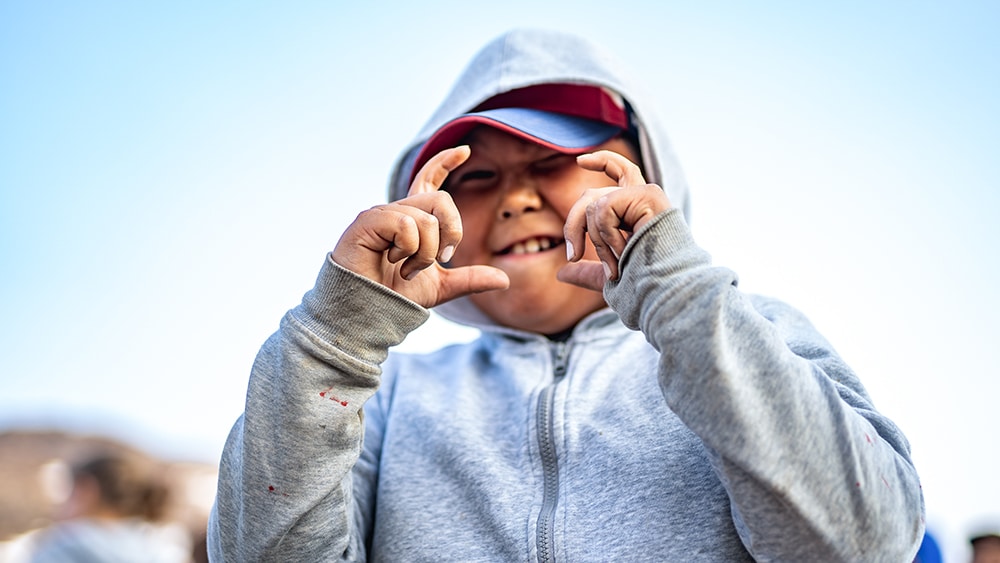
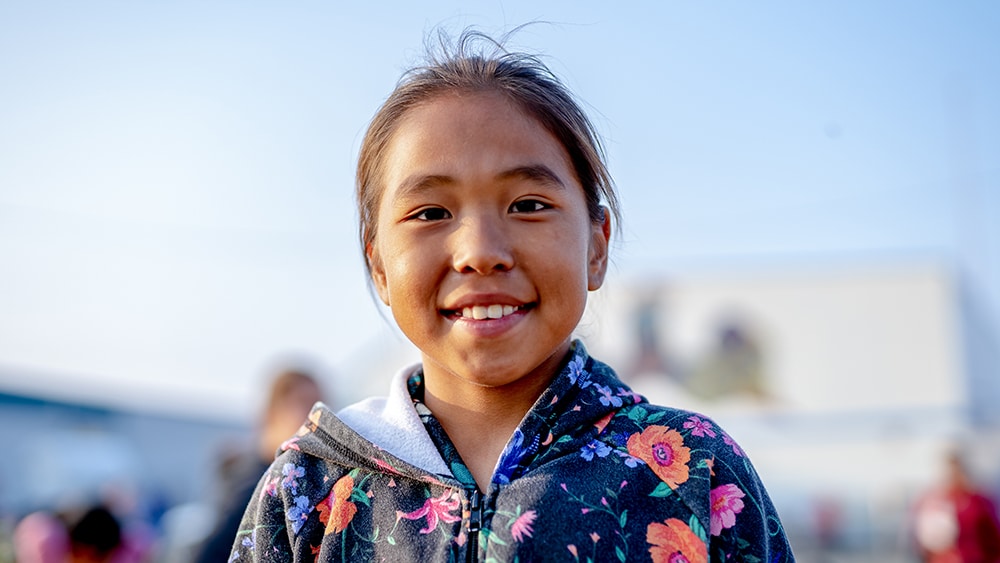
There are three core sections of Eatfit that the team hopes to share with the kids from Cape Dorset. These include, nutrition, fitness, and mindfulness.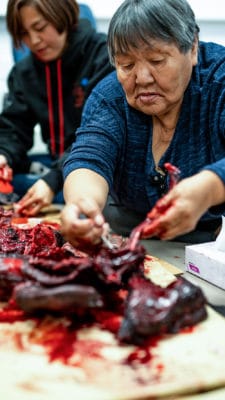 The program stems from the founder’s culinary background but has since grown to include other aspects of healthy living. Nutrition is a big task in and of itself in a place like Cape Dorset. Even though all food prices are inflated, it seems the pricing doesn’t lend itself very well to a healthy diet. Candy is the “food group” closest in market price to “the south” with fresh produce being on the other end of the spectrum if available at all. It is the chef’s task to figure out how to make affordable, repeatable and edible dinners that will encourage the kids to think about their eating habits and hopefully extend these notions into their homes.
The program stems from the founder’s culinary background but has since grown to include other aspects of healthy living. Nutrition is a big task in and of itself in a place like Cape Dorset. Even though all food prices are inflated, it seems the pricing doesn’t lend itself very well to a healthy diet. Candy is the “food group” closest in market price to “the south” with fresh produce being on the other end of the spectrum if available at all. It is the chef’s task to figure out how to make affordable, repeatable and edible dinners that will encourage the kids to think about their eating habits and hopefully extend these notions into their homes.
It is however the “country food” that proves to be the best solution for an affordable, nutritious meal in places like Cape Dorset. By the second day, I find myself eating seal, caribou, and beluga, all raw, with some of the communities highly respected elders. We sit around on the floor as they carve up the meat and tell us about their upbringing in Cape Dorset in times where they relied on hunting these animals as their primary source of food. Though raw meat of any sort doesn’t rank amongst my favourite foods to eat, it is truly amazing to have the opportunity to taste some of the staple sources of nutrition for their society in generations past.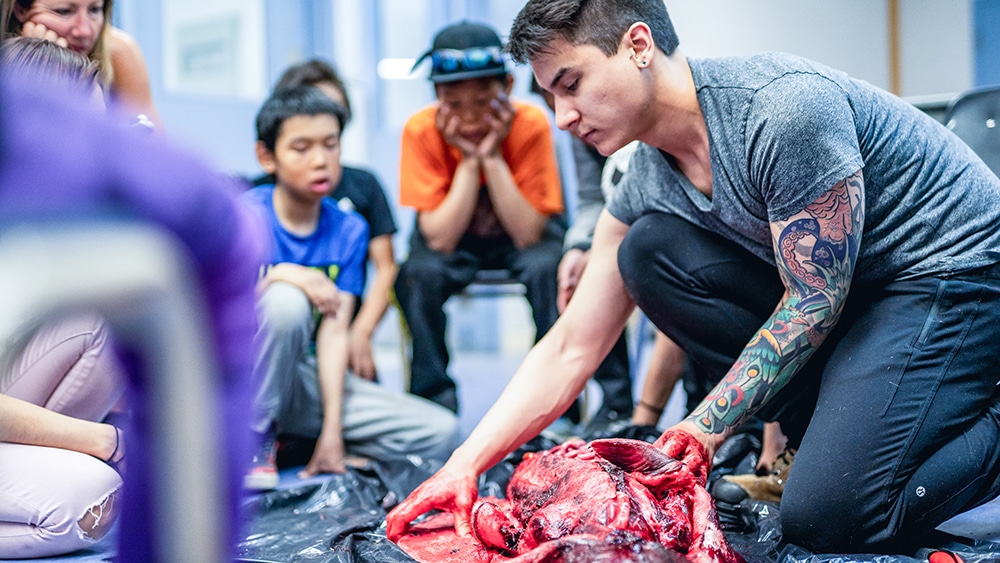
Promoting an active lifestyle isn’t quite as difficult of a task in Cape Dorset. Everyone gets around on foot or by bicycle and will not shy away from a game of basketball or hiking up any of the surrounding mountains. It is however, channeling that inherently active lifestyle in a way that will lead to positive life choices. That is a greater struggle. This is where the yoga and meditation exercises come into play. It is unbelievable watching a gymnasium full of kids throwing balls at one another’s heads transition into absolute silence through guided meditation in the matter of 15 minutes. A reminder that though I am here for work, I plan to get out for a run every day to practice my own form of meditation.
My first run is a solo trek up towards the junkyard. A vast sea of broken down trucks, fire engines, scrap metal, plastic… you name it. The amount of trash is something I really try not to focus on as it can really take away from the beautiful landscapes. A single 50-minute run allows me to visit every small village within the hamlet. 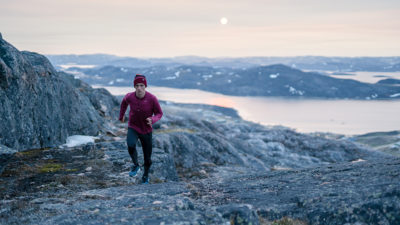 Not an easy task given the endless rolling hills over and around the island, but a rewarding stint of exercise nonetheless. It’s somewhat disappointing to feel drained after finishing up a 50-minute run that would have once felt easy. Especially coming from a running program where 50 minutes would be my absolute smallest workload of the week back when I was running in University. This is a transition I am having to come to terms with as I slowly accept the fact that I’m no longer a varsity athlete jockeying for a top 7 spot on the cross-country team.
Not an easy task given the endless rolling hills over and around the island, but a rewarding stint of exercise nonetheless. It’s somewhat disappointing to feel drained after finishing up a 50-minute run that would have once felt easy. Especially coming from a running program where 50 minutes would be my absolute smallest workload of the week back when I was running in University. This is a transition I am having to come to terms with as I slowly accept the fact that I’m no longer a varsity athlete jockeying for a top 7 spot on the cross-country team.
It seems it’s not too often the island is tread by a running stride. Given it is snow covered for most of the year, the primary modes of transportation are ATVs and snowmobiles. Not to mention, it is not recommended to travel on foot too far off the beaten path without a weapon for protection. My plans to climb the tallest mountain on the island one morning is thwarted by news of a couple of wolves roaming around that area. This is enough to keep me on the main roads for a solo run on a loop up and around the access roads surrounding the landing strip. The climate itself isn’t too dissimilar to a brisk fall day in “The South”, but it definitely feels like you’re running on another, very dry, desolate, planet lacking much vegetation. Having nearly 24 hours of daylight seems to take a toll on mine and everyone else’s normal sleep schedule. You’re hard pressed to find anyone else out and about at 7am, let alone out for a run.
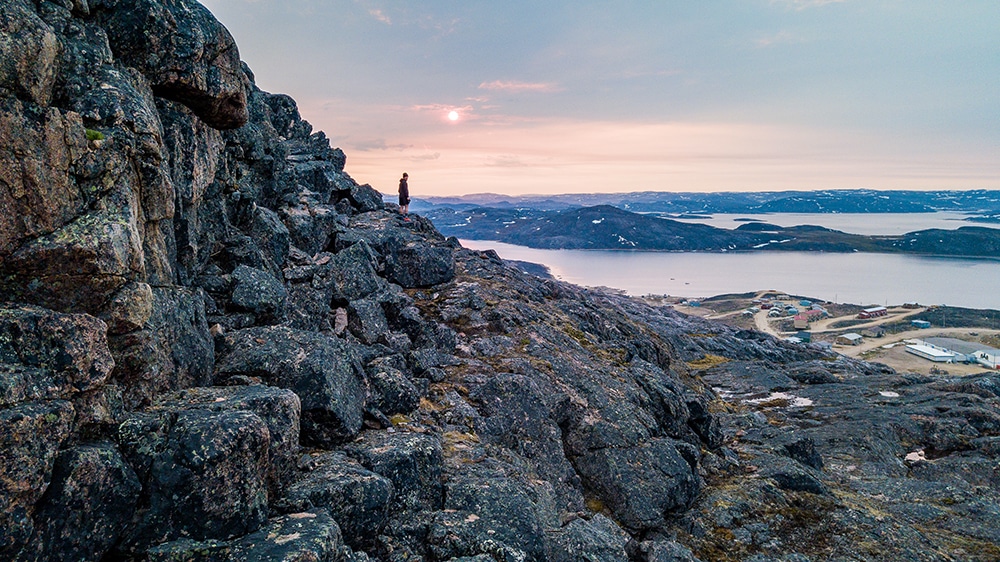
It doesn’t take too long into the trip to convince Dave to throw on some running gear for our trek up the Kingait Mountain Range with the rest of the Eatfit team and some kids from the town. We set off for the hike around 10pm to watch the sun dip below the horizon for the few hours of dusk the island is afforded this time of year. A slow meander from the school doors combined with a few kids asking, “What’s your name?” and “Can I follow?” results in a collection of about 30 kids from the town for our hike. Things like geography can shape social customs in way you wouldn’t expect. One thing you realize quickly is the sense of responsibility and independence the kids here adopt early on into their childhood. A perfect example of this is a 3-year-old named Rose who is wearing sandals and a blanket tied on like a cape. I have never seen a 3-year-old try to climb a mountain. Especially not at 10pm in sandals without any parents around! It’s a reminder that things operate a little differently around here.
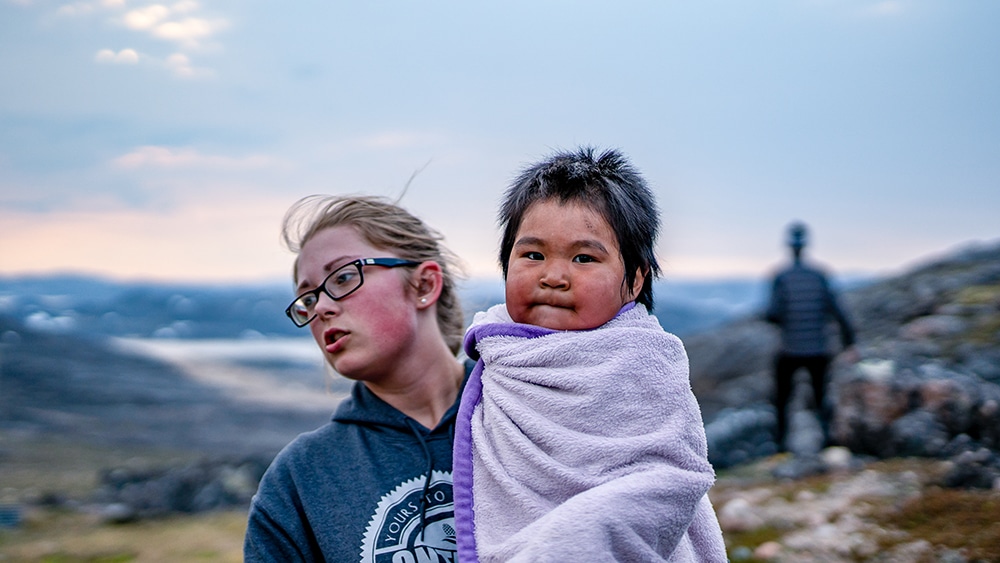
Sitting by the fire gets me thinking. This time two years ago, I was wrapping up my outdoor track and road race season and getting prepped for some high mileage weeks leading into my last cross-country season at Queen’s University. Back then, I would have been reluctant to even go on a trip like this, due to the terrain and lack of training community (both making it tough to get in quality workouts). But a transition out of the competitive University running scene and into running for more intrinsic reasons allows me to enjoy each and every run up north, no matter what pace I was averaging. In University, a rigorous year-round training program combined with a physics degree didn’t leave much time to think about these things.
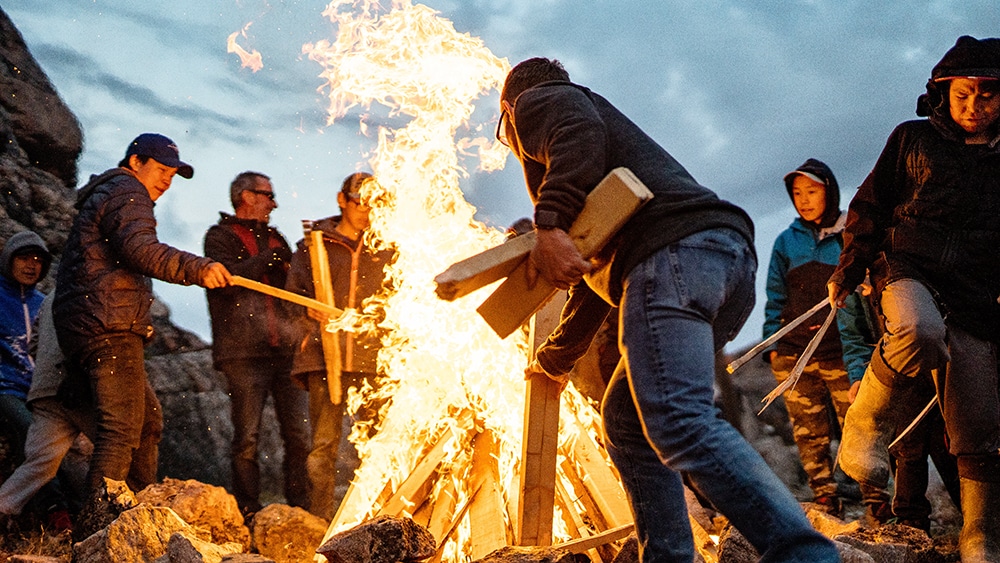
I knew during those four years that I wanted to do well in school and I wanted to run fast. These days I can occasionally achieve the latter. But all too often I catch myself yearning for those days of structure. It’s hard to go out for a run and know you’re nowhere close to being primed for a fresh 5km or 10km personal best. It’s even harder knowing that after leaving a varsity program, life is not going to lend itself well to you getting faster. But lately I’ve learnt that accepting this opens up other doors in the sport of running. A sport I don’t plan to take time away from any time soon. My trip to Cape Dorset is quickly teaching me how lucky I am to have a decent fitness base to fall back on. It continues to allow me to find new joys in the sport of running. Joys that are less hyper-focused on peak fitness and more centered around providing myself the opportunity to explore and learn about new places. In turn also helping me learn more about myself.
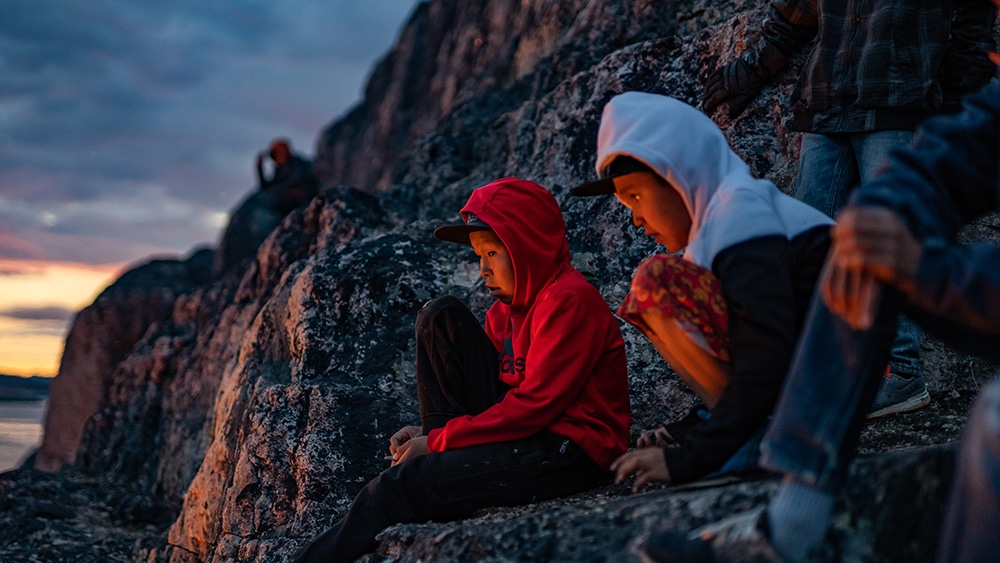
A huge thanks to The Eatfit Project for giving me this incredible life experience and feeding me a new outlet through which I can enjoy my favourite pastime. Dave and I came to Nunavut to help teach, looks like we’ll end this trip having taught a little and learnt a lot.
A great example is how eerily similar the stare you get from a stranger in northern Vietnam is to a stare from a stranger in northern Canada when you’re out for a run in short shorts.



